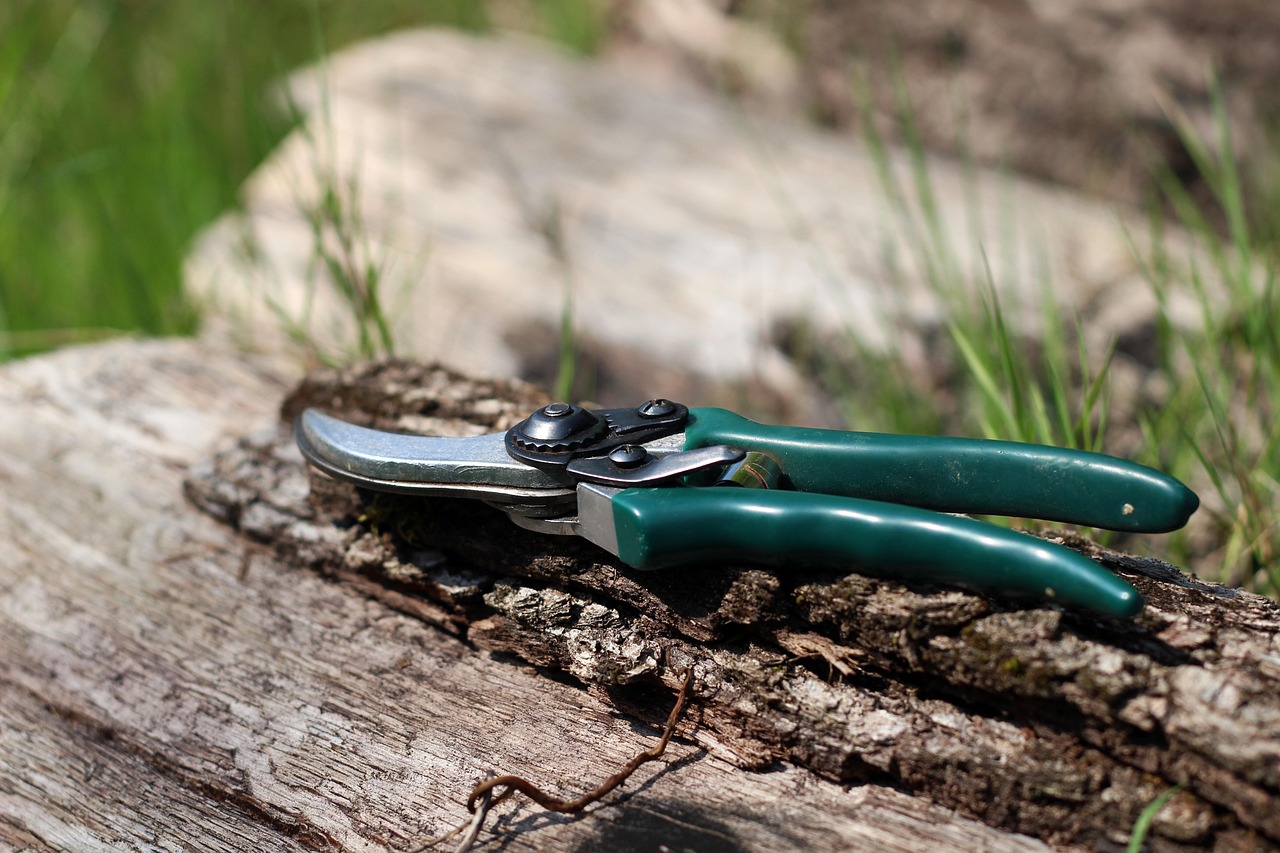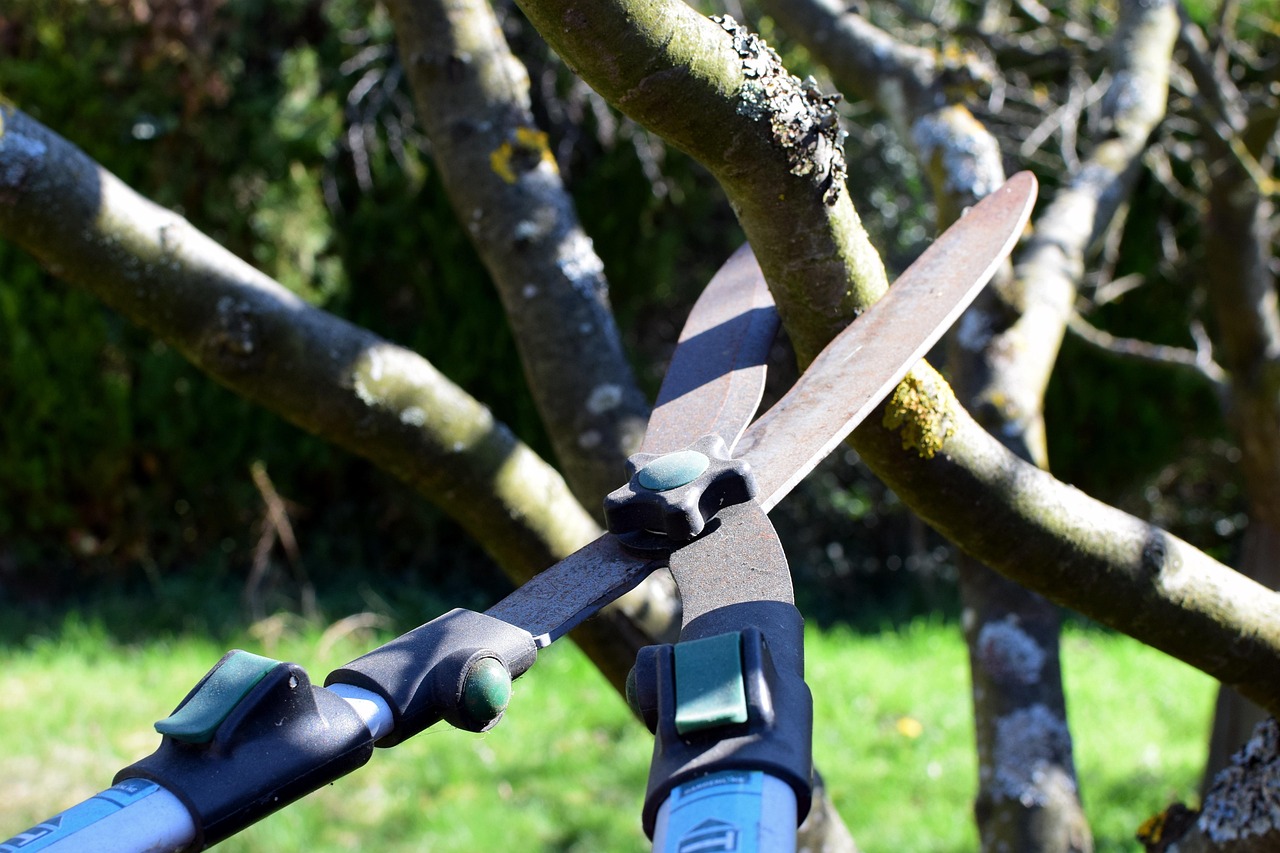Pruning during dormant winter phases offers numerous benefits, including improved plant health, enhanced growth, and a better overall structure. This practice minimizes stress on plants and allows for easier visibility and access to branches.
Pruning is a vital horticultural practice that promotes the health and longevity of trees and shrubs. Winter, particularly during dormancy, is an ideal time for pruning. During this period, plants conserve energy and resources, making it less stressful to remove dead or overgrown branches. Understanding the benefits of this practice can help gardeners and landscapers make informed decisions about their plants.

One of the primary advantages of pruning in winter is the improved visibility it provides. With leaves absent, it becomes easier to identify problem areas within a plant’s structure. Gardeners can see dead wood, crossing branches, or any signs of disease more clearly. This visibility allows for more accurate and effective pruning decisions.
Key Benefits of Winter Pruning
There are several significant benefits to pruning during the dormant season. Here are some of the most notable:
- Healthier Plants: Removing dead or diseased branches prevents the spread of pests and diseases.
- Enhanced Growth: Pruning encourages new growth in the spring, leading to a fuller and more robust plant.
- Better Air Circulation: Thinning out dense foliage allows better airflow, reducing moisture retention that can cause fungal issues.
- Improved Structure: Pruning shapes the plant, leading to a more aesthetically pleasing form.
In addition to these benefits, winter pruning can also lead to increased fruit production in some species. For fruit-bearing trees and shrubs, cutting back during dormancy can stimulate growth in the following season. This results in larger yields and healthier fruit.

Another important factor is that pruning during the winter months can reduce the chances of injury to the plants. In the warmer months, cuts are more susceptible to disease and pests due to active insect populations. Conversely, during winter, when many insects are dormant, cuts can heal with minimal risk.
Understanding Dormancy
Dormancy is a natural phase that many plants undergo to survive harsh winter conditions. During this time, growth slows significantly as the plant focuses on conserving energy. This period is crucial for many species as it allows them to rest and prepare for vigorous growth in spring. Pruning during this stage takes advantage of this natural cycle.
Different plants have varied responses to pruning during dormancy. Some species thrive with winter pruning, while others may require specific timing or techniques. It is essential for gardeners to understand their plants’ unique needs to maximize the benefits of pruning. The following table outlines common types of plants and their recommended pruning practices during dormancy:

| Plant Type | Recommended Pruning Time | Pruning Technique |
|---|---|---|
| Deciduous Trees | Late Winter | Thinning cuts to enhance structure |
| Fruit Trees | Late Winter to Early Spring | Crown thinning and shaping |
| Shrubs | Mid to Late Winter | Selective reduction of older stems |
| Evergreens | Early Spring (before new growth) | Light trimming to maintain shape |
Proper tools play a significant role in successful winter pruning. Sharp, clean tools help ensure smooth cuts that heal quickly. Tools such as hand pruners, loppers, and saws should be selected based on the size of the branches being cut. Safety should always be a priority, so using gloves and eye protection is advisable.
A final consideration is that winter pruning can also improve the overall appearance of a landscape. Well-pruned plants contribute to a neat and tidy garden aesthetic. This not only enhances curb appeal but also fosters a sense of pride in gardening efforts.
The benefits of pruning during dormant winter phases are clear. This practice not only promotes healthier plants but also prepares them for future growth. Understanding when and how to prune effectively will lead to more vibrant and productive gardens.

Timing and Techniques for Effective Winter Pruning
Choosing the right time and technique for pruning during the winter months can significantly enhance the effectiveness of this practice. While the general rule is to prune when plants are dormant, specific timing can vary based on plant species and regional climate conditions.
Optimal Timing for Pruning
Understanding when to prune is crucial for maximizing benefits. Here are some key points regarding timing:
- Late Winter: This is often considered the best time for pruning most deciduous trees and shrubs. The ideal period is typically just before new growth begins, allowing plants to heal quickly as warmer weather arrives.
- Early Spring: Pruning in early spring is suitable for certain species, especially those that flower in summer. This timing ensures that flower buds are not removed.
- Specific Plant Considerations: Some plants, like maples and birches, may bleed sap if pruned too early. For these species, late winter or early spring is preferable.
Pruning Techniques
Utilizing proper pruning techniques is essential for promoting health and encouraging growth. Here are some effective methods:
- Crown Thinning: This technique involves selectively removing branches to improve light penetration and air circulation within the canopy.
- Crown Raising: Removing lower branches allows more sunlight to reach the ground and encourages growth in lower shrub layers.
- Crown Reduction: This method reduces the overall size of the tree or shrub while maintaining its natural shape. It is particularly useful for overgrown plants.
- Deadwooding: This involves removing dead or diseased branches to prevent further decay and pest problems.
Each technique serves a specific purpose and should be chosen based on the desired outcome for the plant. Understanding these methods allows gardeners to tailor their approach to meet individual plant needs.
Tools and Safety Measures for Winter Pruning
The right tools are essential for effective pruning. Using inappropriate tools can lead to damaged plants or ineffective cuts. Here’s a closer look at recommended tools and safety measures:
Essential Pruning Tools
Here are some commonly used tools for winter pruning:
- Hand Pruners: Ideal for cutting small branches and stems, hand pruners are a must-have for any gardener.
- Loppers: Suitable for larger branches, loppers offer increased leverage and reach compared to hand pruners.
- Saws: For thicker branches, a pruning saw or a pole saw may be necessary. These tools provide the power needed to make clean cuts.
- Shears: Hedge shears can be used for shaping shrubs or hedges, providing a clean edge.
Safety Tips
Safety should always be a priority when pruning. Here are some essential safety tips:
- Wear Protective Gear: Gloves protect hands from cuts, while goggles safeguard eyes from debris.
- Use Sharp Tools: Sharp tools make cleaner cuts, reducing the risk of injury and improving plant health.
- Be Mindful of Your Surroundings: Ensure that your workspace is clear of obstacles. Be cautious of overhead branches that could fall.
- Work with a Partner: If pruning large trees or using ladders, having someone assist you can enhance safety.
Common Mistakes to Avoid When Pruning in Winter
Avoiding common pitfalls can enhance the benefits of winter pruning. Here are some mistakes to watch out for:
- Pruning Too Late: Waiting too long into spring may remove vital flower buds on certain species. Be aware of each plant’s blooming schedule.
- Over-Pruning: Removing too much foliage can stress plants, leading to poor growth or even death. Always follow the one-third rule: do not remove more than one-third of a plant’s overall growth in a single season.
- Poor Cuts: Making jagged or improper cuts can invite disease. Aim for clean cuts at a slight angle to promote healing.
- Ineffective Tool Use: Using the wrong tool for the job can cause damage. Always select tools appropriate for branch size and type.
Avoiding these mistakes will ensure that your winter pruning efforts yield positive results for your garden or landscape.
The Role of Winter Pruning in Pest Management
Pest management is another vital aspect of winter pruning. By removing dead wood and thinning out dense growth, gardeners can help prevent pest infestations. Here’s how winter pruning supports pest control:
- Reducing Hiding Places: Dead branches and dense foliage provide perfect hiding spots for pests. Pruning eliminates these areas.
- Disease Prevention: Many pests thrive on unhealthy plants. By maintaining healthy growth through pruning, you reduce the likelihood of pest problems.
- Pest Monitoring: Pruning during winter allows gardeners to better observe plants for any signs of pest activity before the growing season begins.
This proactive approach to pest management not only protects individual plants but also promotes overall garden health during the growing season.
Winter Pruning and Its Impact on Plant Aesthetics
In addition to promoting health and pest management, winter pruning greatly enhances the aesthetic appeal of gardens and landscapes. By shaping plants and removing unwanted growth, gardeners can create a more visually pleasing environment. This section explores how winter pruning contributes to improved plant aesthetics.
Shaping Plants for Visual Appeal
One of the primary goals of pruning is to shape plants into a desired form. Pruning during the dormant season allows gardeners to achieve clean lines and well-defined shapes. Here are some techniques for shaping:
- Topiary: This art form involves sculpting shrubs and trees into specific shapes. Winter is an excellent time to start topiary since plants are bare, allowing for precise cuts.
- Hedge Trimming: Regular pruning helps maintain the desired height and width of hedges, creating a uniform appearance that enhances the overall landscape.
- Espalier: This technique involves training trees or shrubs to grow flat against a wall or trellis. Winter pruning helps manage the growth and shape effectively.
These shaping techniques not only improve the garden’s look but also make it easier to manage plant growth in the long run.
Enhancing Flower and Fruit Production
For many flowering and fruiting plants, winter pruning can lead to increased blooms and yields in the coming season. Properly timed pruning encourages vigorous growth and better fruit set. Here are some benefits:
- Encouraging New Growth: By removing old wood, gardeners encourage new shoots that produce flowers and fruits. This is particularly important for fruit trees.
- Improving Airflow: Thinning can help increase sunlight penetration and air circulation, which are essential for healthy blooms and fruit development.
- Maintaining Plant Size: Pruning helps control the size of flowering shrubs, ensuring they do not become overgrown and unmanageable.
Winter Pruning Techniques for Specific Plant Types
Different plants require specific pruning techniques to ensure optimal health and appearance. Understanding these techniques can help gardeners achieve the best results. Below are some common plant types and their respective winter pruning guidelines.
Trees
Deciduous trees benefit greatly from winter pruning. Here are some recommended practices:
- Remove Dead or Diseased Wood: This prevents diseases from spreading and encourages new growth.
- Thin Crowns: To improve light penetration and air circulation, selectively remove branches that cross or rub against each other.
- Shape the Canopy: Aim for a balanced crown shape by removing uneven branches.
Shrubs
Shrubs can vary widely in their pruning needs. General guidelines include:
- Cut Back Overgrown Shrubs: Use selective pruning to reduce size while promoting new growth.
- Remove Old Growth: Many flowering shrubs benefit from cutting back older stems to stimulate new growth.
- Shape for Aesthetics: Maintain a natural shape that enhances the overall landscape.
Fruit Trees
Winter is an ideal time for fruit tree pruning. The key practices include:
- Selectively Thin Branches: Focus on maintaining an open center to allow sunlight to reach fruit-bearing branches.
- Remove Suckers: Eliminate any suckers that arise from the base or lower branches, as they detract from fruit production.
- Maintain Height: Keep trees at a manageable height for easy harvesting.
Perennials
While many perennials may not require extensive pruning during winter, some benefits can still be gained:
- Cut Back Foliage: Removing dead foliage helps prevent disease and allows for new growth in spring.
- Pest Control: Like other plants, removing dead plant material reduces pest habitats.
Environmental Considerations in Winter Pruning
The practice of winter pruning is not just beneficial for individual plants; it also contributes positively to the environment. Here are some environmental considerations related to winter pruning:
Sustainability Practices
Winter pruning aligns with sustainable gardening practices. Consider these points:
- Promoting Biodiversity: Healthy plants support various wildlife, including beneficial insects and birds, contributing to a balanced ecosystem.
- Reducing Waste: Properly pruned plants often require less water and fertilizer, reducing resource consumption.
- Composting Opportunities: Cuttings and clippings can be composted, returning nutrients back to the soil.
Soil Health Improvement
The benefits of winter pruning extend to soil health as well. Here’s how:
- Nutrient Cycling: Pruning helps create organic matter that, when composted, enriches the soil.
- Aeration Enhancement: Thinned-out plants improve airflow around the soil, promoting beneficial microbial activity.
This holistic approach ensures that winter pruning is not merely about cutting back plants but also about fostering a healthier garden ecosystem.
Additional Benefits of Winter Pruning
In addition to the previously discussed advantages, winter pruning offers several other benefits that contribute to the overall health and vitality of plants. These include fostering resilience against environmental stressors, improving flowering and fruiting cycles, and enhancing the gardener’s relationship with their landscape.
Building Resilience Against Environmental Stressors
Plants that are properly pruned during their dormant season are generally more resilient to environmental challenges. Here’s how winter pruning contributes to this resilience:
- Strengthening Structures: By removing weak or damaged branches, pruning helps ensure that the remaining structure can better withstand wind and snow loads.
- Encouraging Healthy Growth: Plants that are pruned regularly tend to develop stronger root systems, allowing them to access water and nutrients more effectively.
- Reducing Stress Factors: Healthy plants are less susceptible to stress from drought, pests, and diseases, leading to a more robust growth cycle.
Improving Flowering and Fruiting Cycles
A well-timed winter pruning session can also enhance the performance of flowering and fruiting plants:
- Stimulating New Growth: Removing outdated or unproductive branches encourages the development of new shoots that will produce flowers and fruits in the following season.
- Maximizing Yield: For fruit-bearing trees, proper pruning can lead to larger and healthier fruit due to improved sunlight exposure and nutrient distribution.
- Controlled Timing of Bloom: Pruning can help control when a plant flowers, enabling gardeners to time blooms for specific events or seasons.
The Emotional and Psychological Benefits of Pruning
The act of winter pruning is not only beneficial for plants but can also positively impact the gardener’s well-being. Engaging in gardening activities such as pruning can provide emotional and psychological benefits:
- Stress Relief: Gardening is known to reduce stress levels. The physical activity involved in pruning can be a form of exercise that promotes relaxation.
- Cognitive Engagement: Planning and executing a pruning strategy requires focus and thought, stimulating cognitive function.
- Satisfaction and Accomplishment: Witnessing the positive results of pruning can lead to feelings of accomplishment and satisfaction, encouraging continued engagement with gardening.
Creating a Sense of Community
Participating in gardening activities, including winter pruning, can also foster community relationships. Many neighborhoods have gardening clubs or community gardens where members share knowledge, tools, and experiences:
- Knowledge Sharing: Gardeners can exchange tips on effective pruning techniques, pest management, and seasonal care practices.
- Collaborative Efforts: Working together on community projects enhances social bonds and fosters a sense of belonging.
- Environmental Stewardship: Community gardening initiatives promote awareness about sustainable practices and biodiversity conservation.
Final Thoughts
The importance of winter pruning extends far beyond mere aesthetics. This practice plays a crucial role in promoting plant health, enhancing garden productivity, managing pests, and improving soil health. By effectively pruning during the dormant season, gardeners set the stage for robust growth in spring and summer. The act of pruning also contributes to a more resilient gardening ecosystem while offering significant emotional and psychological benefits to those engaged in these activities.
As gardeners embrace winter pruning as an integral part of their seasonal routine, they unlock a wealth of opportunities for both their plants and themselves. Understanding the timing, techniques, and benefits of winter pruning empowers gardeners to create thriving landscapes that not only please the eye but also nurture the environment. Ultimately, winter pruning is a powerful tool for anyone looking to cultivate a healthy garden and enhance their gardening experience.
